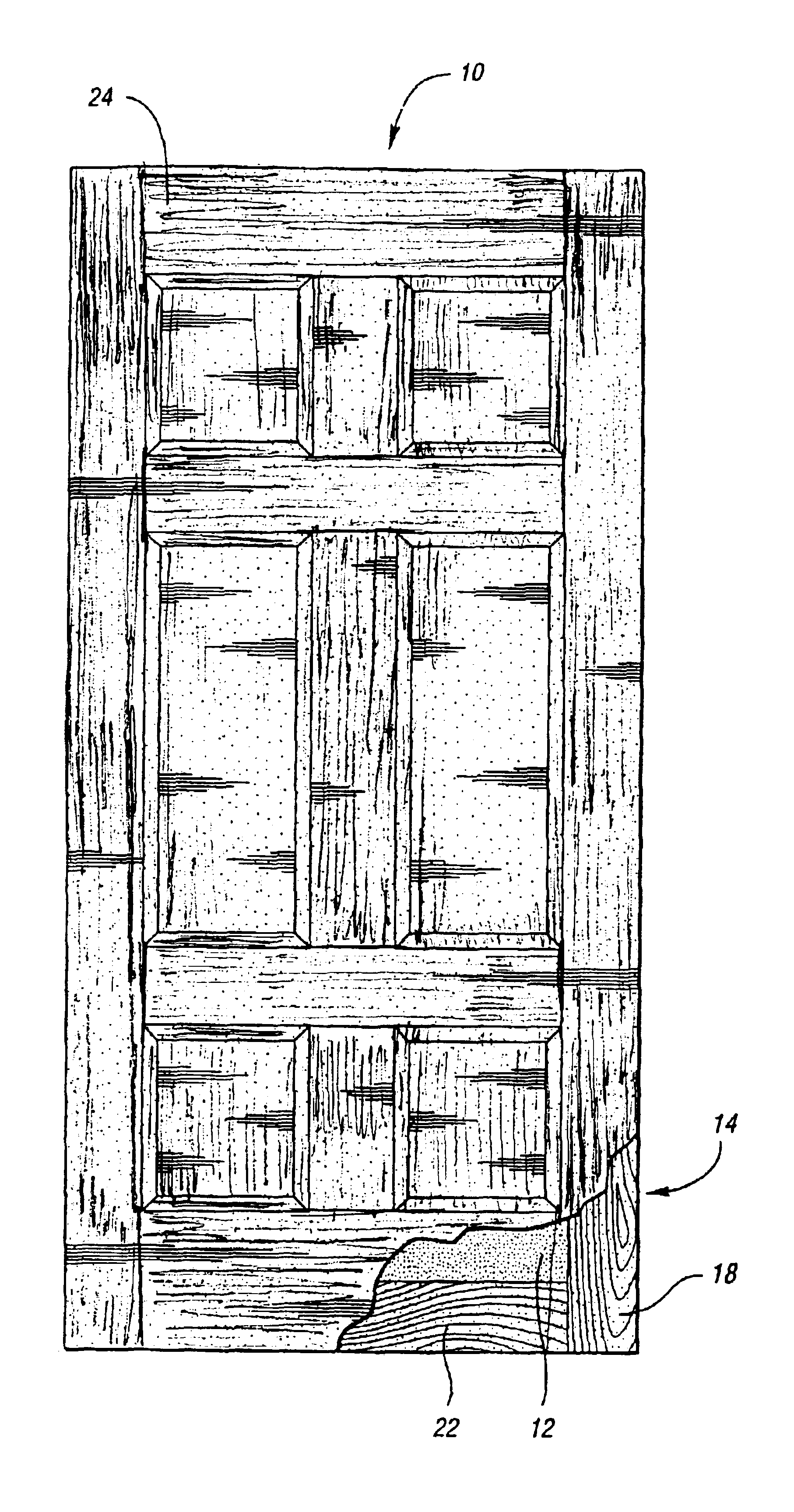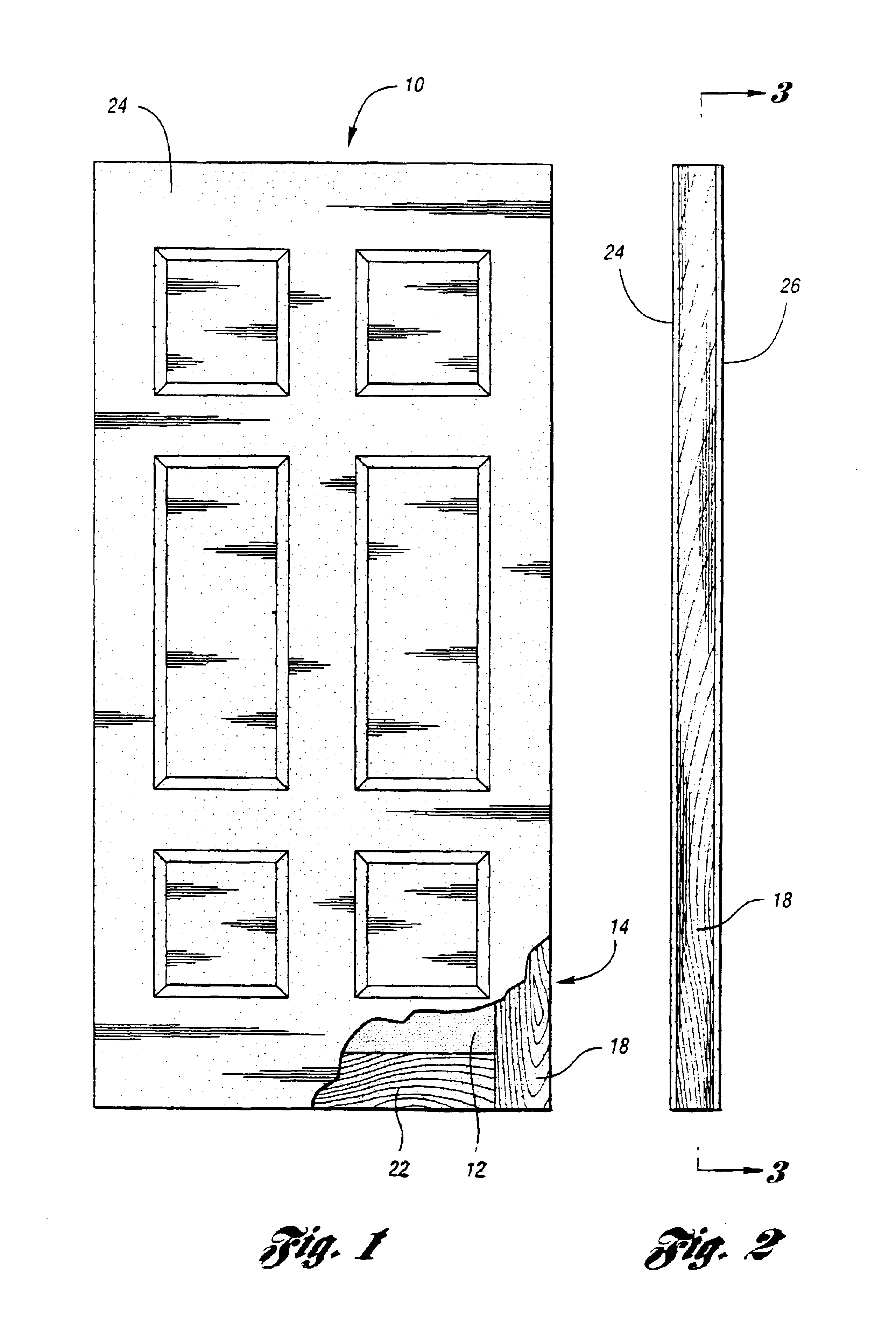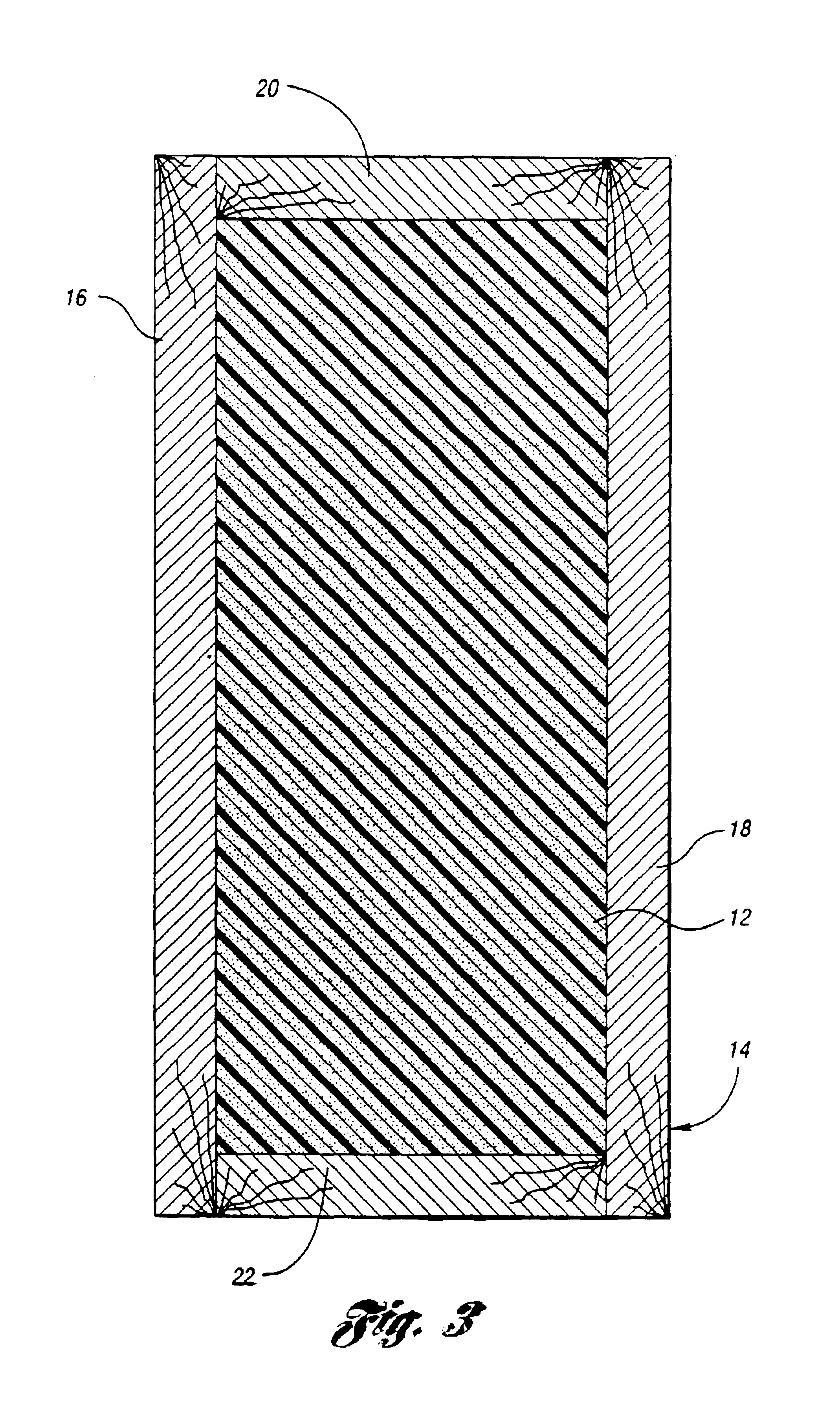Compression molded door assembly
a door assembly and compression molding technology, applied in the field of door parts, can solve the problems of cracking and splitting, solid wood door members can experience significant dimensional changes, and other problems, and achieve the effect of low shrinkag
- Summary
- Abstract
- Description
- Claims
- Application Information
AI Technical Summary
Benefits of technology
Problems solved by technology
Method used
Image
Examples
example 1
[0069]A preferred molding compound of the present invention which is capable of producing door skins having thicknesses of between about 1.0 mm and about 2.5 mm; widths of between about 0.75 m and about 1.07 m; and lengths of between about 1.95 m and about 2.45 m and having a shrinkage of between about −0.0003 to about +0.0015 comprises the following:
[0070]
TABLE 1WT % OF MOLDINGITEMCOMPOUNDResin System-CatalystComponentResin system125.35Mineral filler250.71Cure catalyst30.38Cure inhibitor40.05Internal lubricant51.18Thickener componentThickener60.38Pigment71.12Monomer80.28Internal lubricant90.54Cure Inhibitor40.01Fiber reinforcement1020.01Alpha / Owens Corning E-4295 (low profile resin system comprising a polyester resin, low profile additives, and monomer) 2Huber ® W-4 from J. M. Huber Corporation, Engineered Materials Division, of Quincy, Illinois 3t-Butylperoxybenzoate from Aztec Peroxides, Inc., of Elyria, Ohio 4Ashland Mod-E (5% PBQ) from Ashland Chemical Co., Composite Polymers D...
PUM
| Property | Measurement | Unit |
|---|---|---|
| width | aaaaa | aaaaa |
| thickness | aaaaa | aaaaa |
| thickness | aaaaa | aaaaa |
Abstract
Description
Claims
Application Information
 Login to View More
Login to View More - R&D
- Intellectual Property
- Life Sciences
- Materials
- Tech Scout
- Unparalleled Data Quality
- Higher Quality Content
- 60% Fewer Hallucinations
Browse by: Latest US Patents, China's latest patents, Technical Efficacy Thesaurus, Application Domain, Technology Topic, Popular Technical Reports.
© 2025 PatSnap. All rights reserved.Legal|Privacy policy|Modern Slavery Act Transparency Statement|Sitemap|About US| Contact US: help@patsnap.com



